
中空玻璃注胶流程时常出现的问题
时间:2024-02-28 来源:http://www.jncsjx.com/ 发布人:昌盛机械
市场上的中空玻璃大多数采用的是双道密封工艺,通常第一道密封采用的是丁基胶,其主要作用是固定铝条,降低水汽及气体在边缘的渗透性。二道密封胶有硅酮密封胶、聚硫密封胶、聚氨酯密封胶几种,分结构性装配和非结构性装配,在中空玻璃中的作用首先是密封,即保持空气层内的气体,促进中空玻璃的性能保持;其次是粘结,即把各元件牢固的连接在一起,保持中空玻璃的结构稳定。
Most of the insulating glass on the market adopts a dual sealing process, usually using butyl rubber as the first sealing, which is mainly used to fix the aluminum strip and reduce the permeability of water vapor and gas at the edges. There are several types of sealant, including silicone sealant, polysulfide sealant, and polyurethane sealant, which are divided into structural assembly and non structural assembly. The first function in insulating glass is to seal, that is, to maintain the gas in the air layer and promote the performance of the insulating glass; Next is bonding, which firmly connects the components together to maintain the structural stability of the insulating glass.
中空玻璃密封胶是决定中空玻璃性能优劣的主要因素,但要得到优质可靠地中空玻璃仅仅选择质量性能优异的密封胶是不够的,另一个重要的环节是实际生产中的注胶工艺,决定着中空玻璃制品的综合质量。中空玻璃用双道密封胶都有严格的施工方法和要求,具体如下:
Hollow glass sealant is the main factor determining the performance of hollow glass, but to obtain high-quality and reliable hollow glass, it is not enough to only choose sealant with excellent quality and performance. Another important link is the injection process in actual production, which determines the comprehensive quality of hollow glass products. There are strict construction methods and requirements for double-layer sealant used in insulating glass, as follows:
一、第一道密封:热熔丁基胶
1、 First sealing: hot melt butyl adhesive
丁基密封胶是槽铝式双道中空玻璃的第一道密封,它是一种热熔胶,具有很低的水气透过率(在中空玻璃密封胶中低)和很高的粘性,是铝条侧面和玻璃之间阻隔水汽的有效屏障;实现间隔框与玻璃的定位组装,为二道密封胶的涂施、固化和中空玻璃的成型提供基础。
Butyl sealant is the first seal of slot aluminum double channel insulating glass. It is a hot melt adhesive with low water vapor permeability (low in insulating glass sealant) and high viscosity. It is an effective barrier between the side of the aluminum strip and the glass to block water vapor; Realize the positioning and assembly of the spacing frame and glass, providing a foundation for the application and curing of the second layer of sealant and the formation of the hollow glass.
第一道密封胶的注胶工艺
The injection process of the first sealant
1、进场检验:打开包装,检查有无明显颗粒和杂物
1. Entry inspection: Open the packaging and check for obvious particles and debris
2、清洗基材
2. Cleaning the substrate
3、根据不同的施工环境调整丁基胶的挤出温度,根据涂胶速度、出胶量大小调整丁基胶的挤出压力
3. Adjust the extrusion temperature of butyl rubber according to different construction environments, and adjust the extrusion pressure of butyl rubber according to the coating speed and the amount of adhesive produced
4、涂胶。涂胶前先排尽丁基胶涂布机气缸内的空气,涂胶过程中仔细检查铝隔条上涂布的丁基胶有无断线、气泡及杂质,是否涂布均匀,必要时应重新涂敷或补胶。
4. Apply glue. Before applying adhesive, exhaust the air inside the cylinder of the butyl adhesive coating machine. During the adhesive application process, carefully check whether the butyl adhesive applied on the aluminum spacer strip has broken lines, bubbles, and impurities, and whether it is evenly applied. If necessary, reapply or supplement the adhesive.
5、合片
5. Composite film
6、进入二道密封。
6. Enter the second seal.
二、第二道密封:双组份硅酮密封胶或聚硫、聚氨酯密封胶
2、 Second sealing: Two component silicone sealant or polysulfide/polyurethane sealant
二道密封胶不仅要将玻璃和间隔框粘结成一个整体,而且可以起弹性恢复并缓冲边部应力等辅助性作用。要提高中空玻璃的性能和密封寿命,密封胶必须具有良好的粘结性、优良的结构强度和弹性、优异的耐候性。
The second layer of sealant not only needs to bond the glass and spacing frame into a whole, but also has auxiliary effects such as elastic recovery and buffering of edge stress. To improve the performance and sealing life of insulating glass, sealant must have good adhesion, excellent structural strength and elasticity, and excellent weather resistance.
第二道密封胶的注胶工艺(以双组份硅酮密封胶为例)
The injection process of the second sealant (using two-component silicone sealant as an example)
1、进场检验:蝴蝶测试,检查硅酮密封胶的混合均匀性;拉断时间测试,拉断时间和AB组分的混合比例有关,同时可提供胶的工作时间及胶内部深度固化的时间参考;剥离粘结性实验,检验胶对实际基材的粘结性。
1. Entry inspection: Butterfly test to check the mixing uniformity of silicone sealant; The break time test is related to the mixing ratio of AB components, and can also provide reference for the working time of the adhesive and the time for deep curing inside the adhesive; Peel off adhesion experiment to test the adhesion of the adhesive to the actual substrate.
2、基材清洗
2. Substrate cleaning
3、严格按照生产厂商提供的比例混合A/B组分,混合充分,若为手工操作,一次混胶不要太多,以免提前固化影响粘结强度。
3. Strictly mix the A/B components according to the proportion provided by the manufacturer, and mix thoroughly. If it is manual operation, do not mix too much at once to avoid early curing and affecting the bonding strength.
4、注胶。可使用双组份打胶机或人工涂胶。使用打胶机时,打胶机应当装有A/B组分供胶压力指示表,出胶压力连续可调,均匀注入到玻璃封胶区,完全填实间隔条框两侧,注胶过程中,应当随时观察第二道密封胶的注胶量,保证密封胶充分与丁基胶接触并与玻璃边平齐,中间不得有气道、气泡,胶深应符合要求。
4. Glue injection. Two component gluing machine or manual gluing can be used. When using the glue machine, it should be equipped with a pressure indicator for A/B component glue supply. The glue output pressure should be continuously adjustable and evenly injected into the glass sealing area, completely filling both sides of the spacer frame. During the glue injection process, the amount of the second sealant should be observed at all times to ensure that the sealant is fully in contact with the butyl adhesive and flush with the glass edge. There should be no air ducts or bubbles in the middle, and the glue depth should meet the requirements.
5、静置与养护。注完胶的玻璃构件及时移至静置场所进行养护,要求温度10-35摄氏度,相对湿度为35%~75%,无油污,无大量灰尘,玻璃构件静置三到五天后方可挪动及运输,且应当待总养护期到14天后方可进行安装施工。
5. Staying still and maintenance. The glass components that have been glued should be moved to a static place for maintenance in a timely manner, with a temperature of 10-35 degrees Celsius, a relative humidity of 35%~75%, no oil stains, and no large amount of dust. The glass components can only be moved and transported after three to five days of standing, and installation and construction should be carried out after the total maintenance period reaches 14 days.
三、中空玻璃密封胶在使用过程中出现的典型问题及解决方案
3、 Typical problems and solutions of insulating glass sealant during use
密封胶施工是个复杂的过程,涉及许多因素:基材性能、施工时的天气、工作环境、施工设备、施工人员等的,因此经常出现各种施工问题,下面就生产中的一些典型案例做具体分析。
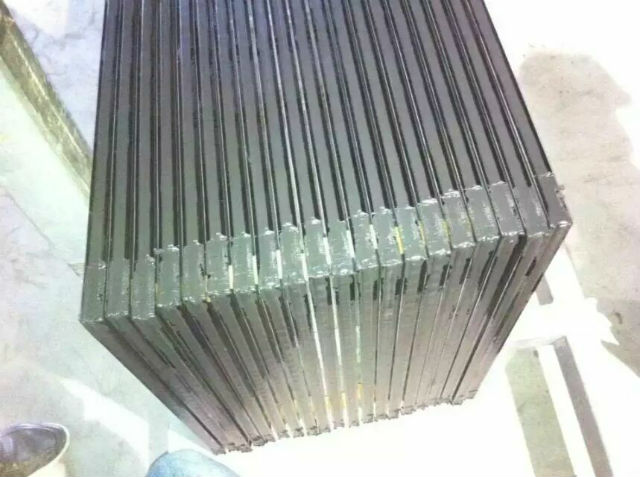
Sealant construction is a complex process that involves many factors such as substrate performance, weather conditions during construction, working environment, construction equipment, construction personnel, etc. Therefore, various construction problems often occur. Below are some typical cases in production for specific analysis.
(1)玻璃部分粘结不理想
(1) Poor bonding of glass parts
1、事先是否按规范做相容性测试
1. Have compatibility tests been conducted in advance according to the specifications
2、养护时间短就进行剥离性粘结测试,养护温度较低(尤其在冬天)
2. If the curing time is short, conduct peel adhesion testing, and the curing temperature is low (especially in winter)
3、泵的气压不足,导致胶混合不匀,粘结效果要差些,同时容易造成枪头压力不足,打的胶缝不致密(密实度不够)
3. The insufficient air pressure of the pump leads to uneven mixing of the adhesive, resulting in poor bonding effect. At the same time, it is easy to cause insufficient pressure on the gun head, resulting in less dense adhesive joints (insufficient density)
4、设备故障问题,导致胶混合效果不佳。如果打胶机的气缸密封垫磨损的时候,就会导致不一致的固化剂混合入胶内,AB泵工作行程不同步或者不匹配,AB组分混合不均匀,出现花胶情况。有些在刚打完胶时还检查不出来,等胶干透了,就会透过玻璃看到花胶。可采用连续挤出测试来判断一下,即在一张平板上来回打出一条蛇形的密封胶,时间维持在三到五分钟,让泵至少运转2个周期,检查是否存在异常情况(即所谓的软点)。
4. Equipment malfunction caused poor adhesive mixing effect. If the sealing gasket of the cylinder of the glue machine wears out, it will cause inconsistent curing agents to mix into the glue, the working stroke of the AB pump is not synchronized or matched, and the AB components are mixed unevenly, resulting in adhesive problems. Some of them cannot be detected even after the glue is applied, and when the glue is completely dry, the flower glue will be seen through the glass. Continuous extrusion testing can be used to determine whether there are any abnormal conditions (so-called soft spots) by repeatedly applying a snake shaped sealant on a flat plate for three to five minutes and allowing the pump to run for at least two cycles.
5、不同厂家的AB胶混用
5. Mixing AB adhesive from different manufacturers
6、溶剂不符合要求,或未干透等。特别需要注意的一点是胶在养护的阶段,胶的固化和胶的粘结性建立是独立的,就是说就是胶达到完全固化,并不意味着胶和基材建立了完全的粘结性。尤其对双组份来说特别明显。因此,玻璃单元承受应力前要允许有足够的时间来建立粘结性,这一点非常重要。
6. The solvent does not meet the requirements or is not completely dry. A special point to note is that during the curing stage of the adhesive, the curing of the adhesive and the establishment of its adhesion are independent. This means that the adhesive reaches complete curing, but it does not necessarily mean that the adhesive and substrate have established complete adhesion. Especially evident for two components. Therefore, it is crucial to allow sufficient time for the glass unit to establish adhesion before bearing stress.
(2)混合后有颗粒的问题,容易造成堵枪。
(2) The problem of particles after mixing can easily cause gun blockage.
1、在打胶的过程中,中间中断时间比较久,或多次累积,在施胶结束时清洗不完全,尤其在夏天气温较高时胶固化快。至于中断多长时间就应该冲胶,建议在拉断时间之前,拉断时间根据每天的不同温度和湿度在每天打胶前测得。另外,现在的客户往往要求胶固化时间快,中断时间稍长点容易造成出现颗粒。
1. During the gluing process, there may be prolonged interruptions or multiple accumulations, resulting in incomplete cleaning at the end of gluing, especially during high temperatures in summer when the glue solidifies quickly. As for how long the interruption should be before gluing, it is recommended to measure the breaking time before gluing based on different temperatures and humidity each day. In addition, current customers often require a fast curing time for the adhesive, and a slightly longer interruption time can easily cause the appearance of particles.
2、AB组分的气压不足,造成混合不匀,而且出胶慢,容易产生颗粒。
2. The insufficient air pressure of component AB causes uneven mixing and slow dispensing, making it easy to produce particles.
3、B组分未做检查和清理。B组分对水汽比较敏感,由于运输、存储环境等偶然因素可能造成B组分表面结皮,将结皮的部分压到管道内,容易产生颗粒,简单的处理是用刮刀将结皮的东西清理掉,不影响胶的使用效果。
3. Component B was not inspected and cleaned. Component B is sensitive to water vapor, and accidental factors such as transportation and storage environments may cause surface peeling of component B. Pressing the peeling part into the pipeline can easily produce particles. A simple solution is to use a scraper to remove the peeling material without affecting the effectiveness of the adhesive.
4、长期未清理滤网和单向止回阀。滤网和单向止回阀采用普通机械密封,时间长了容易产生颗粒。建议定期清理滤网、单向止回阀、静态混合器和胶枪。
4. Long term failure to clean the filter and one-way check valve. The filter and one-way check valve use ordinary mechanical seals, which can easily produce particles over time. It is recommended to regularly clean the filter screen, one-way check valve, static mixer, and glue gun.
5、B组分压盘上的O型圈,使用时间久了,松了,缝隙间容易残留B组分,B组分容易遇水汽形成颗粒,这种情况平时不易注意到。
5. The O-ring on the B-component pressure plate has become loose after prolonged use, and the gaps are prone to residual B-components. B-components are prone to particle formation when exposed to water vapor, which is not usually noticed.
(3)气泡问题
(3) Bubble problem
双组份硅酮密封胶经混合后发生反应,将膏状物变成弹性橡胶体,期间会有少许小分子气体释放,这个过程是比较复杂的。未固化前的硅酮密封胶,极易受到外部环境和混合均匀性的影响,为各种起泡现象创造了机会,所以有时很难用一种方法、一种结果来判断起泡原因。正常情况下,硅胶固化后是致密弹性橡胶体。出现气泡问题多数是养护环境、操作规范、硅胶和机器配合使用的问题等。
The two-component silicone sealant undergoes a reaction after mixing, transforming the paste into an elastic rubber body. During this process, a small amount of small molecule gas is released, which is quite complex. Pre cured silicone sealant is highly susceptible to external environmental and mixing uniformity influences, creating opportunities for various foaming phenomena. Therefore, it is sometimes difficult to determine the cause of foaming using one method or one result. Under normal circumstances, the cured silicone gel is a dense elastic rubber body. The occurrence of bubble problems is mostly due to issues with the maintenance environment, operating standards, and the combination of silicone and machine use.
1、养护环境。有些用户因场地紧张等,打完胶就放到公司的院子里,在太阳下暴晒,结果出现有的气泡像蜂窝状,有的直接破裂,而且比较大,原因是在太阳下暴晒,气温较高,胶缝表面容易结皮固化,而内部固化时产生的小分子气体来不及释放,聚集成较大的气泡,直观表现就是胶缝外部隆起。
1. Maintain the environment. Some users, due to limited space, place the glue in the company's yard and expose it to the sun. As a result, some bubbles appear like honeycomb, while others burst directly and are relatively large. The reason is that when exposed to the sun, the temperature is high, and the surface of the glue joint is prone to scaling and solidification. However, the small molecule gas generated during internal solidification cannot be released in time, accumulating into larger bubbles, which is intuitively manifested as the external bulge of the glue joint.
2、湿度较高和气温较低的环境下,打胶的玻璃表面上容易留有一层不易看到的水汽,此种情况容易发生在某个时段,不常发生。
2. In environments with high humidity and low temperature, the surface of the glued glass is prone to leaving a layer of invisible water vapor, which can occur at a certain time and is not common.
3、换桶时桶中及胶表层混入的空气没有排放干净。
3. The air mixed in the barrel and the surface of the glue during the barrel change was not completely discharged.
4、B组分压盘上的O型圈,使用时间久了,松了。
4. The O-ring on the B-component pressure plate has become loose after prolonged use.
5、打胶的密实度。如枪头的压力不够,胶缝里边容易裹进空气。
5. The compactness of the glue application. If the pressure on the gun head is not enough, air is easily trapped inside the adhesive seam.
6、设备故障。如双组份打胶机有漏气的地方,AB组分的工作泵行程不同步,尤其是刚开打的一瞬间,往往是A泵的压力大些,混合后的胶比正常情况要稀,甚至有些部位塌陷。
6. Equipment malfunction. If there is a leak in the two-component glue machine, the working pump stroke of component AB is not synchronized, especially at the moment of starting the glue, the pressure of pump A is often higher, and the mixed glue is thinner than normal, and even some parts collapse.
7、不同厂家的AB组分混用。
7. Mixing AB components from different manufacturers.
8、溶剂不符合要求,或未干透等。
8. The solvent does not meet the requirements or is not completely dry.
- 中空玻璃生产线有哪些设备组成呢 2025/11/27
- 全自动铝条折弯机:中空玻璃一体折弯铝条和插角拼接的区别? 2025/11/25
- 玻璃涂布机设备出胶不均匀怎么办? 2025/11/24
- 丁基胶涂布机的胶阀滴漏原因 2025/11/23
- 全自动丁基胶涂布机胶缸不进不退怎么解决? 2025/11/22
- 立式丁基胶涂布机胶水出胶断断续续应该怎样办 2025/11/21
- 卧式丁基胶涂布机的中空丁基胶机胶头螺丝起什么作用? 2025/11/20
- 中空玻璃丁基胶涂布机常见故障排除方法 2025/11/19
- 双组份打胶机打胶不饱满怎么解决? 2025/11/18
- 全自动铝条折弯的折弯尺寸不准怎么回事 2025/11/17

 当前位置:
当前位置: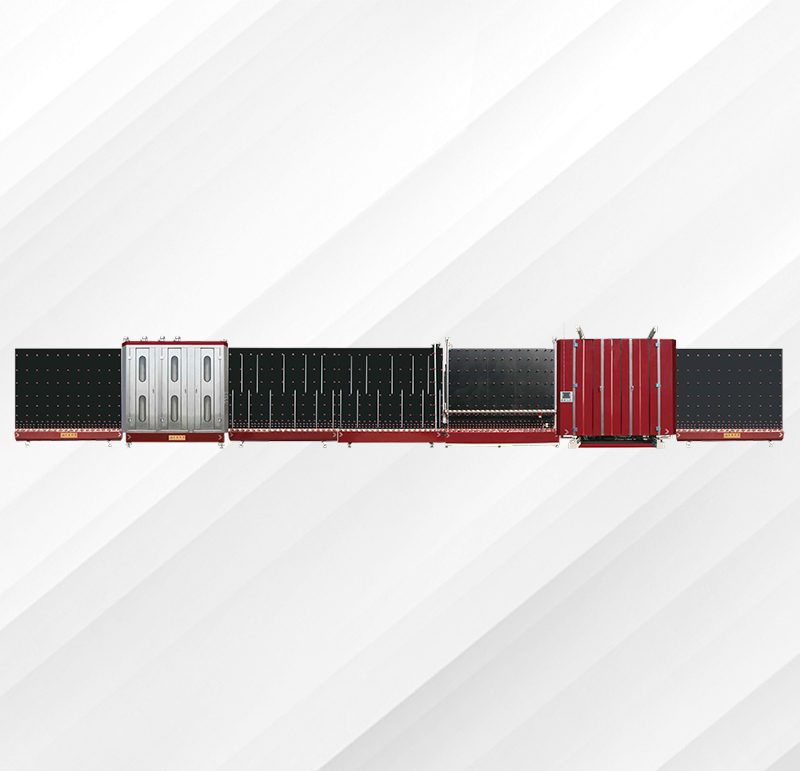
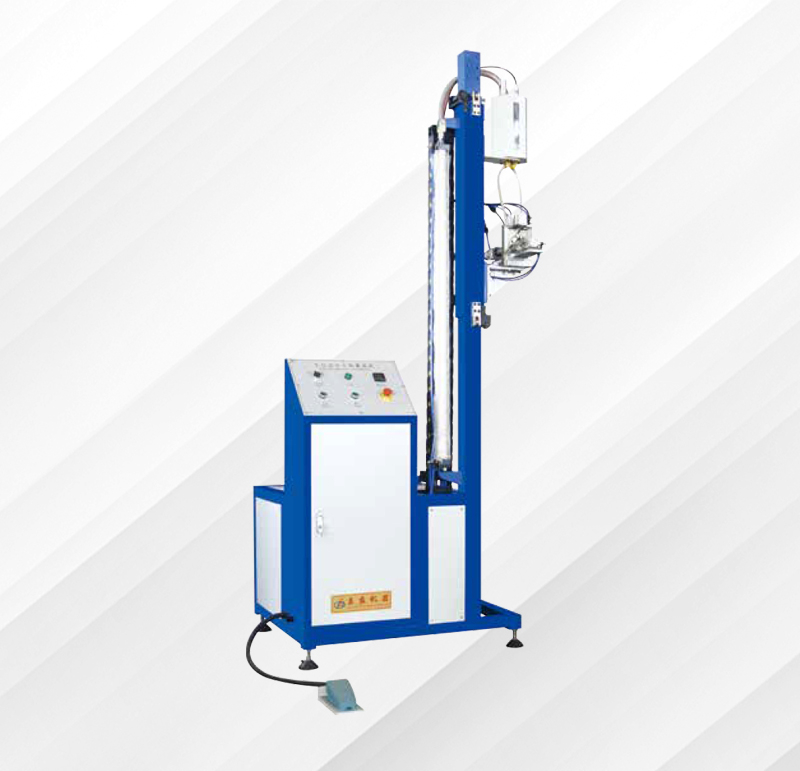
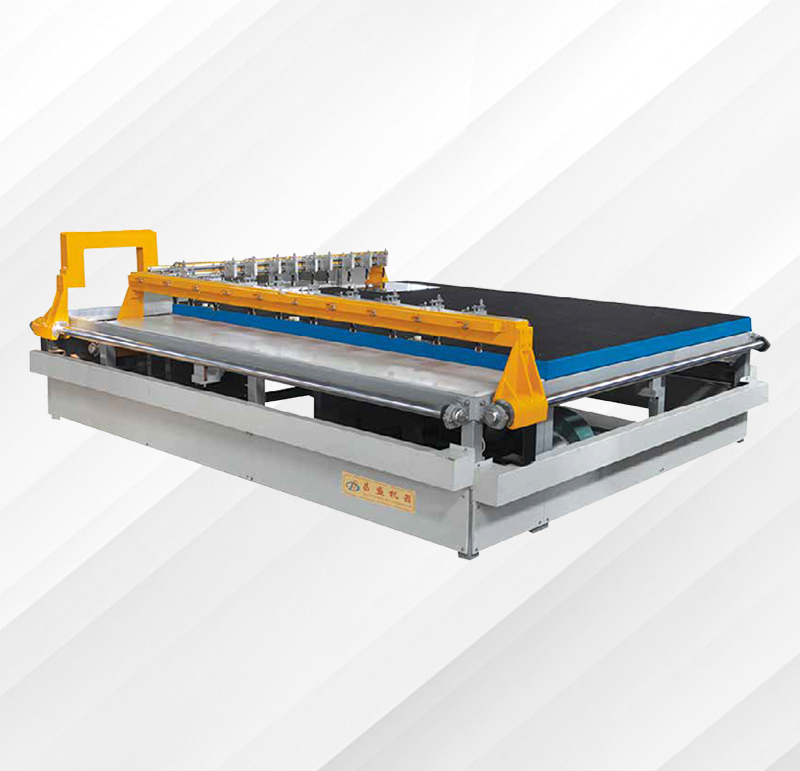
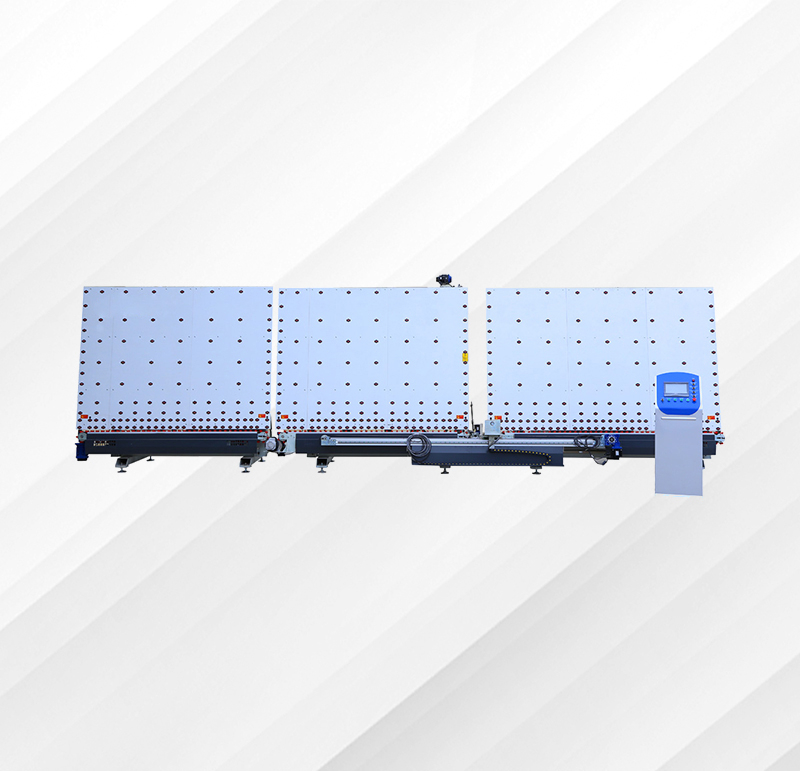
 产品分类Product categories
产品分类Product categories
 联系我们Contact us
联系我们Contact us
